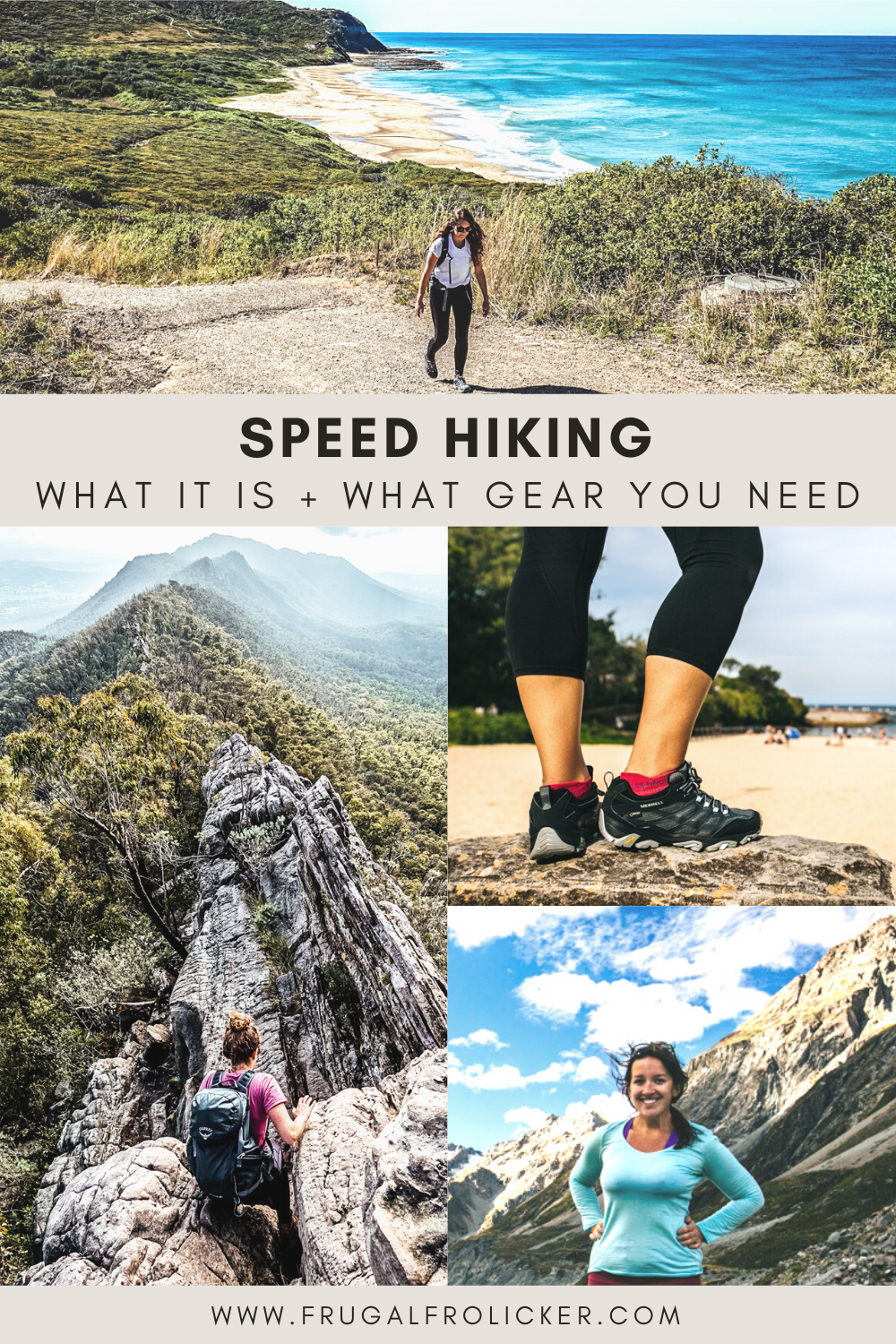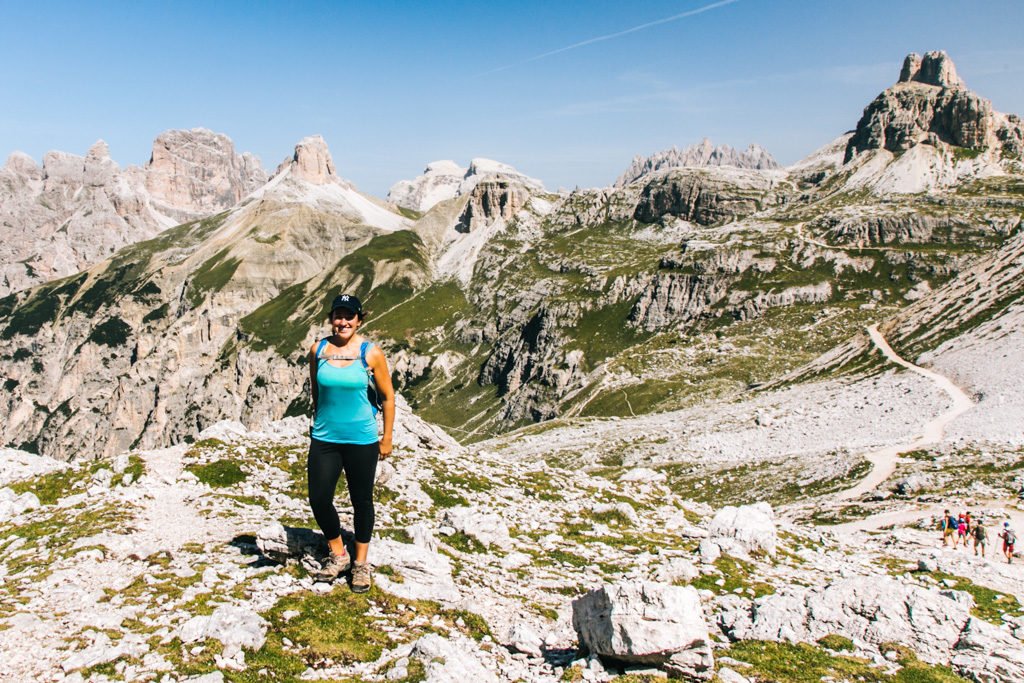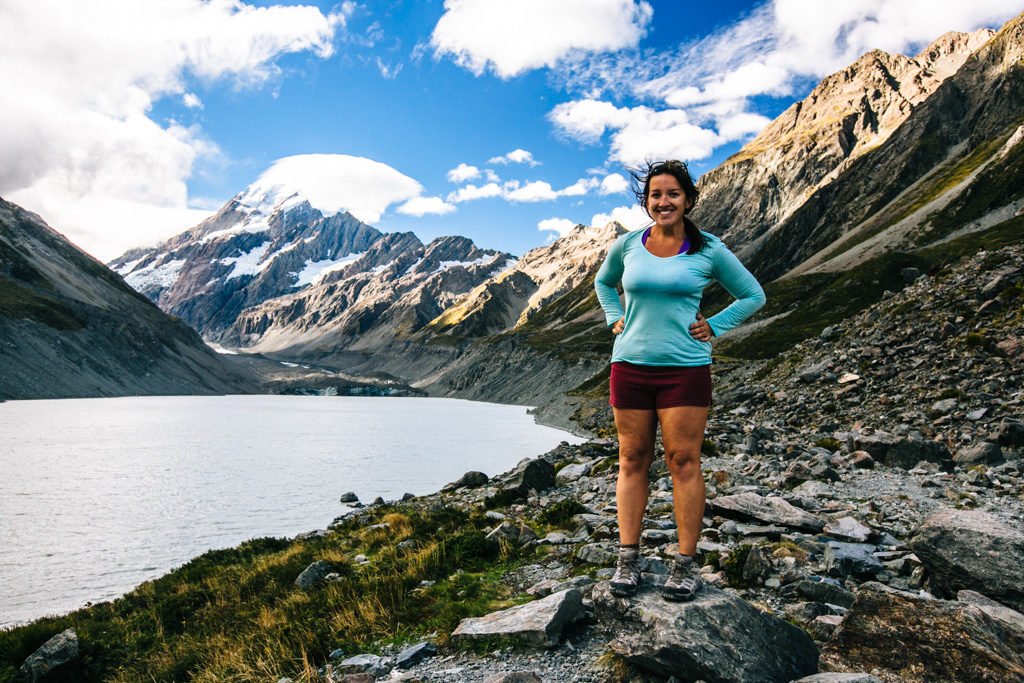This post was last updated on 2020 October 31
This is a guest post by Beck of Travel Made Me Do It.
—
Not long back, Dan and I visited Wilsons Promontory National Park in Victoria, Australia. As keen hikers, we were very much spoilt for choice when it came to trails to tread and summits to conquer.
However, we had one slight problem: too many amazing hikes and too few days in which to do them. We couldn’t just pick a few, we wanted to do them ALL.
What do to? Enter: speed hiking!
Photo by Travel Made Me Do It.
What is Speed Hiking?
Whether recreational or competitive, speed hiking (also known as power hiking) is essentially what it says on the box: walking quicker than your usual hiking pace. But of course, this is relative to each individual and there is no hard or fast rule as to what speed officially constitutes power hiking, or even what terrain or location to do it in. Speed hiking is accessible to all and is not reserved for the so-called fittest hikers on the steepest of mountains.
Contrary to what you might be thinking, speed hiking is not about whizzing through a trail in the quickest time possible, only to miss out on the beauty of your surroundings. In fact, the aim of the game is to maximize how much you can explore a place in the time you have. The faster you hike, the more you can see, right?
We began speed hiking after facing the constant conundrum of having to cherry-pick hikes on each of our trips when really we wanted to do them all! Speed hiking allowed us to hike more trails and see more of an area than we otherwise would. It completely transformed our travels and hiking-based trips.
Photo by Travel Made Me Do It.
How Does Speed Hiking Differ From Trail Running & Fastpacking?
Speed hiking is often confused with trail running and fastpacking. Admittedly there are many similarities, but they’re not the same.
Trail running is just that, running. It tends to be slightly more competitive than speed hiking, with a focus on completion times and personal bests, just with the bonus of being in some beautiful outdoor locations.
Fastpacking falls somewhere between the two and is perhaps the most similar. Fastpackers travel lightly, with a need for speed. Commonly, fastpackers may speed hike the ups, jog the flats and run the descents. It also traditionally encompasses multi-day hikes, whereas speed hiking is more for single-day adventures.
What Gear Do You Need For Speed Hiking?
Fear not, speed hiking is not some exclusive club that warrants its own specialized kit. In fact, the majority of your existing hiking gear will easily suffice, especially while you’re coming to grips with this new, faster-paced activity.
That being said, speed hikers want to travel lightly. It makes sense really: the lighter your load, the quicker you can move. So by that notion, here are five speed hiking gear recommendations to consider:
Footwear
Traditionally when hiking, my go-to speed hiking shoes have been a good, sturdy, warm and waterproof leather boot. However, when trying to move quickly on a trail, I’ve found they can be a little heavy and cumbersome.
So I switched to the North Face Hedgehog Fastpack II and I haven’t looked back. Lightweight, breathable, and waterproof, this low-top shoe (which has a similar feel to a trainer) has been a real game changer for me.
Photo by Travel Made Me Do It.
Backpack
Whatever backpack you choose, it needs to be comfortable and distribute its load evenly throughout your upper body. We’ve tried speed hiking with a CamelBak, which has been wonderfully lightweight. However, you can’t pack much else other than water.
That being said, I usually choose to speed hike with my Osprey Skarab 30 Hydration Pack instead. It has room for a 2.5L hydraulics reservoir, easing up space traditionally taken by water bottles, while also fitting in my other hiking essentials. Its dual cross body straps at the chest and hips means that it’s super comfortable and well-fitting.
Lightweight Layers
Like most activities that get the heart rate up, you’ll soon find you may start to overheat when working hard on those trails. You probably have a wealth of excellent hiking gear to keep you warm, keep you cool, keep you dry, etc. But the real question is, is it lightweight and does it pack down small?
If the answer to this is no, then you may want to eventually rethink your gear for speed hiking. You want base layers, fleece layers and waterproof layers that can easily be carried, on your person or backpack, that add little weight or bulk to your overall gear.
There are loads of solid options here, but to keep it simple we recommend: Icebreaker merino wool base layers, the Patagonia Better Sweater fleece layer, and the Marmot Minimalist Jacket for a waterproof layer.
Camera Equipment
Just because you’re speed hiking doesn’t mean you can’t stop to take photos. Remember, this is recreational and entirely up to you how you structure your day. But carting heavy camera equipment around when wanting to hike quickly isn’t exactly the easiest – so we invested in a superb compact camera to counter this issue.
The Sony Cybershot RX100 VII has enabled us to take top quality pictures, at a fraction of the weight. It’s not the cheapest compact on the market, but it is the best and we’ve been blown away by its capabilities. We happily speed hike with this camera, leaving the DSLR and all its extras for more photography-specific hikes. It’s such a great little grab-and-go camera.
If taking top-quality photos is hugely important to you and you just can’t bring yourself to downgrade to a compact camera, consider investing in a mirrorless camera. This’ll be much lighter than a DSLR, without sacrificing any image quality. Check out the Canon EOS M100 or the Sony A7 III – though be warned, you might just be tempted to ditch your DSLR entirely and make the switch over to mirrorless full-time!
GPS Technology
I can’t recommend a good GPS enough. When you’re zipping along those trails, it can be easy to lose track of bearings and time.
It’s also helpful to monitor distance covered versus the time you’ve been on a trail, which helps to gauge whether you need to speed up your pace. When you’ve planned 3 hikes to fit into one day, you need to be on it!
Summary
So there you have it, speed hiking in a nutshell. I’m sure some of you will read this and realize that’s how you’ve been hiking for years. Or perhaps you’ve never heard of speed hiking before and are keen to try it out.
Either way, there’s so much outdoors to be explored, we find speed hiking the perfect way to see as much of it as possible.
To read more in depth information on speed hiking, check out our post How To Join The Wonderful World Of Speed Hiking.











